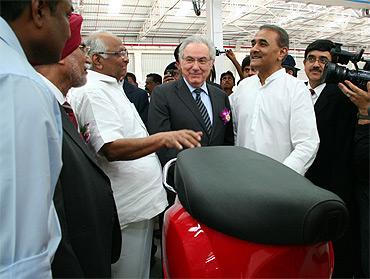
While Vespa, the most expensive scooter in India, will remain a niche player, the Italian firm wants the iconic brand to create a buzz about its less expensive scooters that would follow soon.
When Vespa returned to India, the excitement at the launch event in late April this year was understandable.
After all, Piaggio Vehicles, the Italian three- and four- wheeler maker, was bringing back one of the most iconic brands in two-wheelers after a gap of 13 years.
. . .
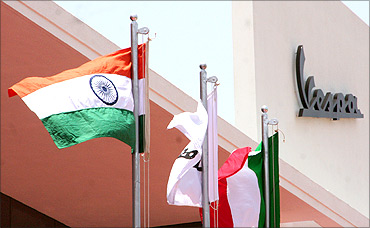
The pricing, however, came as a surprise.
At Rs 66,666, the retro-looking Vespa became the most expensive scooter in India.
It is 32 per cent costlier than the Honda Activa, India's largest-selling scooter.
The question was will it be able to survive in a fiercely competitive Indian market where much has changed in the intervening 13 years?
The sales figures have not been encouraging: At 18,000 units till October, Vespa, a Hollywood hot favourite, commands a share of a little over one per cent of the domestic scooter market, which saw cumulative sales of over 1.7 million units till last month.
. . .
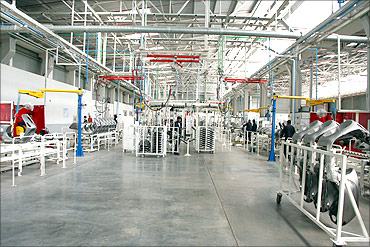
That may mean a lacklustre performance, but Piaggio executives at the company's headquarters in Pune insist that Vespa is 'the iPhone of the scooter market' and it's still early days.
What they are happy about is the right levels of excitement that Vespa has generated.
Ravi Chopra, chairman and managing director, Piaggio Vehicles says, "Our strategy was very clear.
"We wanted to create a premium space in the scooter category, which till now did not exist.
"The Vespa meets the needs of the youth who wish to indulge in luxury but do not have a product to buy."
. . .
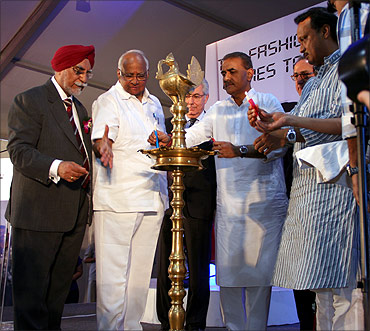
Chopra is correct. India saw over 2.5 million scooter sales in the last financial year posting a growth of 25 per cent over the previous year.
However, unlike motorcycles with multiple sub-segments, scooters sell in a narrow price band with most available for under Rs 52,000.
Presently scooters do not have a niche brand in India, while motorcycles offer a wide variety of products above Rs 100,000.
In a market where scooters typically score high on their utility purpose (such as carrying load) than on its aspirational value, Piaggio seems to heading in the opposite direction with Vespa, thus trying to create a niche brand albeit on lower volumes.
. . .
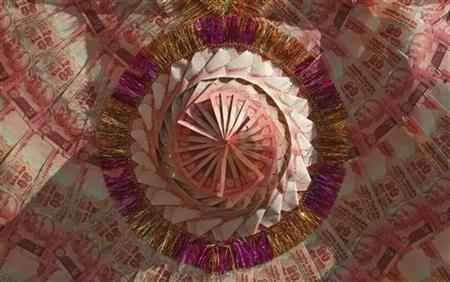
"Trying to create a premium segment is not easy, one has to be patient.
"Sometime segments are created over 10-15 years and sometimes it gets created in 10-15 months.
"It took Bajaj 10 years to create the Pulsar in the premium segment. When you are catering to a niche luxury segment, you have to be satisfied with a lower volume growth", adds Chopra.
The slow ramp-up and limited retail reach of the dealers (the company is yet to tap the eastern part of the India) has also led to lower volumes of the Vespa.
However, it would be wrong to assume that the company has kept the volumes of the Vespa artificially low to maintain its exclusivity. Piaggio is, in fact, in a production ramp-up mode at its plant in Baramati, Maharashtra.
. . .

"We have a major expansion plan. We have appointed 55 handpicked Vespa dealers.
"The experience a buyer gets in a Vespa dealership is the same he would get in a boutique.
"If I were a mass market manufacturer of this product, I would be selling 25,000 Vespas a month, but that would not do any good to the product", adds Chopra.
The Honda Activa sells around 80,000-100,000 units a month while the Hero Motocorp duo of Pleasure and Maestro sell in excess of 55,000 units a month, as per company data. Honda Motorcycle and Scooter India is the leader in the scooter segment with a share of 50 per cent.
. . .
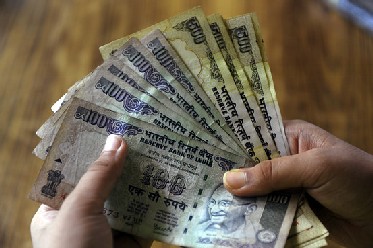
Life beyond Vespa Piaggio, however, is also looking at life beyond Vespa.
The Indian market will see the launch of an affordable range of mass market scooters from the Italian company next year, and the new range will not be under the Vespa brand. Variants of the Vespa scooter is also scheduled to hit markets next year.
Piaggio knows it's a relatively unknown brand in the two-wheeler space competing with the likes of Honda, Suzuki, Hero and Yamaha, and needed to generate some excitement first.
That's where the Vespa comes in.
It's a top-down approach: while the Vespa will remain the centrestage brand, cheaper products will follow after the company gets into the consumers' mindspace.
. . .

"The company cannot do business with just one product and therefore we are very seriously contemplating add-on products.
It is from these products that we will be seeking large volumes.
The Vespa will remain a premium product", elaborates Chopra.
Competition though is not losing sleep as everyone knows the headroom for scooter growth in India is tremendous.
More than 62 per cent of the domestic scooter market is dominated by the Japanese brands - Honda, Suzuki and Yamaha.
"Piaggio's entry won't dent the market share of anybody but will bring in additional volumes", says a senior executive of a Delhi-based manufacturer.